Keeping your boat shiny
Many people have commented that Eight looks so shiny on pictures. We indeed spend time on maintaining Eight, but not as much as you may expect. Cleaning a boat (and other things) is a science. Do it right to save lots of time and money.
To start with, you need to identify the type of dirt / contamination before you can tackle it properly and easy. Each type of dirt, requires its own approach.
Grease
Grease can best be removed with soap. If you paid attention in school, you have learned that soap and grease form a chemical reaction, whereby the soap molecules encapsulate the grease particles. Warm water works best because it enhances the chemical reaction.
Dirt
Dirt is best removed with an alkaline cleaning product mixed with water. Wiping with a wet cloth is not the solution. You dissolve the dirt and wipe it from left to right. This just spreads the dirt. Wash down with a sponge and then wipe dry! We use a super absorbing towel (Swobbit Aqua Dry Towel). Works great. This is also what they use on super yachts after each day of sailing.
For hard to reach places, we use a Bosch Easy Aquatak 120 Pressure cleaner. It is a small unit that stacks away easily. Works quite well for such a small unit. Don’t aim at your toes, because it will take off the skin……
Skidmarks
We have a ‘no shoe’ policy on board but have not been able to convince custom officers to take off their shoes. So, there will always be skid marks to tackle. We got hold of 4 pair of boatshow shoe covers. Costom officers are happy to wear those we have learnt. I use quite a bit of Acetone. This is non-greasy and does not damage gelcoat. White spirit is also great to have on board. Don’t use Acetone on Flexiteak as it the Flexiteak will turn purple!
Hull
After each crossing or once week, we wash the hull with fresh water-maker water. Water-maker water has no chalk / limescale. As long as the wax on the hull forms droplets, this is fine. If it does not, we use a wax-shampoo. This cleans the hull and leaves a thin wax layer behind, like a carwash wax treatment, which keeps on shedding off the water as much as possible. We use a Swobbit washing bonnet and a square(!) bucket to apply the wax-shampoo onto the hull.
Waxing
It is good to treat all fiberglass surfaces with a layer of wax, twice a year. There are easy to apply waxes and hard waxes. I use a hardwax with an UV filter. It prevents chalking and oxidizing. I just apply it by hand close to sunset (cannot use it in full sunlight) with a glass of wine at hand. A bit of music and polish away….
Be careful using (PTFE) Teflon waxes. Other waxes cannot be applied over a Teflon wax. So once a Teflon wax, always a Teflon wax. But this limits the use of other products when needed.
Best is to use just one brand that have a complete range of products, including rubbing compounds (cleaners). I use Riwax. This is a Swiss brand of professional cleaners and waxes. They have a complete range of products. Expensive but very good. All boat polishing companies in Holland, use their products. When you want to get rid of light scratches or dirt that cannot be removed other wise, use a rubbing compound first and then the wax. This is where you run into problems with Teflon waxes….keep them for your car.
It helps to follow a boat polishing course and to have the correct polishing machines to make the work light if more than just waxing is required to restore the gelcoat. From Riwax I have various rubbing compounds. Number 2, 4 and 6 (from course to fine). Number 8(!) is a quick (of course) wax which is easy to apply and buff out. Number 10 is a Hardwax which is more work but has better UV protection and gelcoat nourishment capabilities. It lasts longer. If you want to limit your investment just get 2, 8 and 10. That covers most issues for amateur use.
Dull hull
Limescale /chalk in dock water will leave a chalky residue on your hull, making it dull. When the boat is new, the wax on the hull will shed off the water, so it is less of a problem. But dirt and salt will hold a layer of water, leaving the limescale /chalk behind. We spray off the boat with fresh water after each passage. I installed a freshwater pump. It is just 15 minutes work and keeps the hull shiny.
We exclusively clean the boat with water maker water as this contains no limescales / chalk. We have a shore-water connection on the boat now. When we are in a marina, we use the dock water to shower, but water maker water from the tank to clean the boat.
When you do get a dull chalky layer on the boat, don’t try and polish it away, you will just rub the chalk/limescale into the gelcoat. Put vinegar in a spray bottle and spray onto the hull. Leave it for 5-10 minutes and wash off with water-maker water. Then use the wax shampoo after to protect. Acids like vinegar dissolve chalk.
Teak
The teak table, stairs and bow seats turn grey and ugly quite quickly. I have seen teak sealers but they take away the nice teak look. Varnishing is an option but one day this will wear off, after which it is hard to restore the look. We Use a thin teak oil from Sika. Initially you need to do use it quite a lot to saturate the top layer of the wood. It keeps the teak as new.
Surface rust
There is a big misconception about stainless steel. Most people think that stainless steel should not stain or bleed a brownish residue. Stainless steel is normal carbon steel with a little bit of Chromium added. After production, there are Iron and Chromium particles at the surface. It is the Iron particles that make the stainless steel brownish. An acid is used to pacify the product (eat away the iron particles). The chromium, when exposed to oxygen in the atmosphere, forms a thin invisible layer called Chromium Oxide that protects against rust. If this layer is damaged, rust is formed on the surface at the point of damage. Not cleaning, allows dirt to attach to the surface which can allow Iron (found in most water) to react to oxygen in the air. Good news is, with a little cleaning this layer is self-healing.
The best way to treat a rusty item is to polish it with a stainless-steel polish. This works fine for flat surfaces but on bolts and nuts this will not work. We use Starbright rust stain remover for difficult to reach or clean items. Spray it on, leave it for 5 minutes and wash off thoroughly. Rust stain remover is an acid and will damage gelcoat if you leave it on too long, so beware. You can also use a vinegar-water mixture. We do spray it on gelcoat to get rid of the brown rusty stripes. But wash off after the stripes are gone.
Fly rust
Steel ships and grinding work go hand in hand. We try and avoid marina’s down wind of commercial ports. Small metal particles will fly through the air like a Corona virus and land on your deck. At least they are easy to spot after some time. They turn into handsome freckles. We use the Starbright stain remover for this.
Warning
Never use steel wool and abrasive cleaners. Steel wool will leave behind small steel hairs which will rust. Make sure you do not have them on board. You can buy Stainless-steel wool instead. No that we use it though. They are popular in galey for some reason.



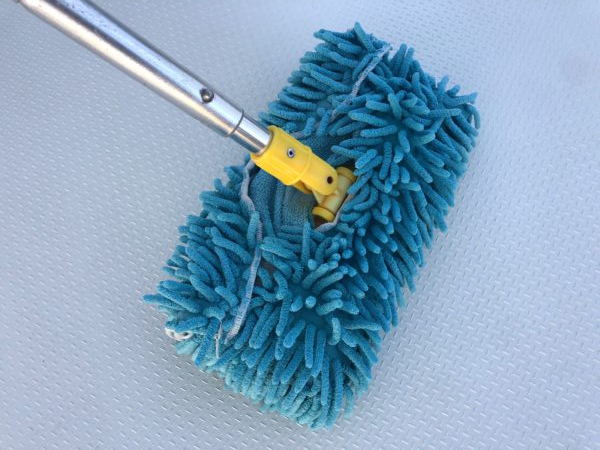
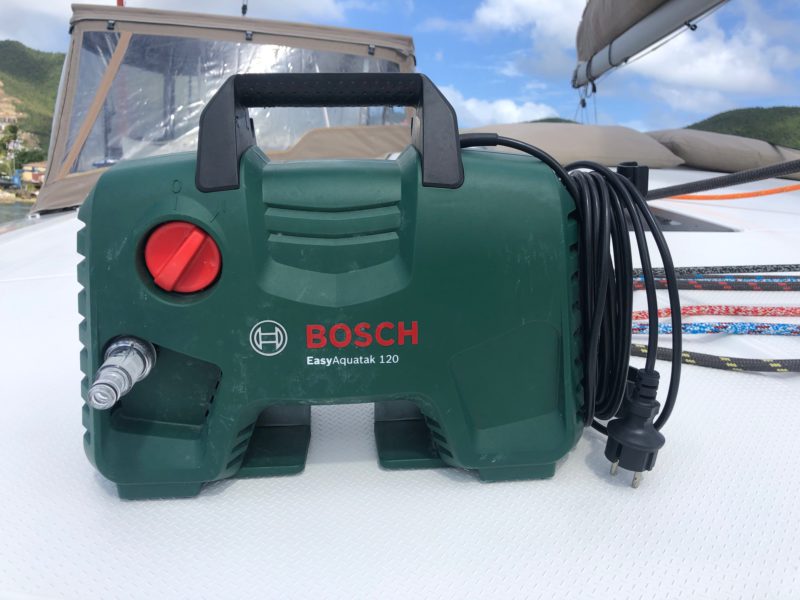
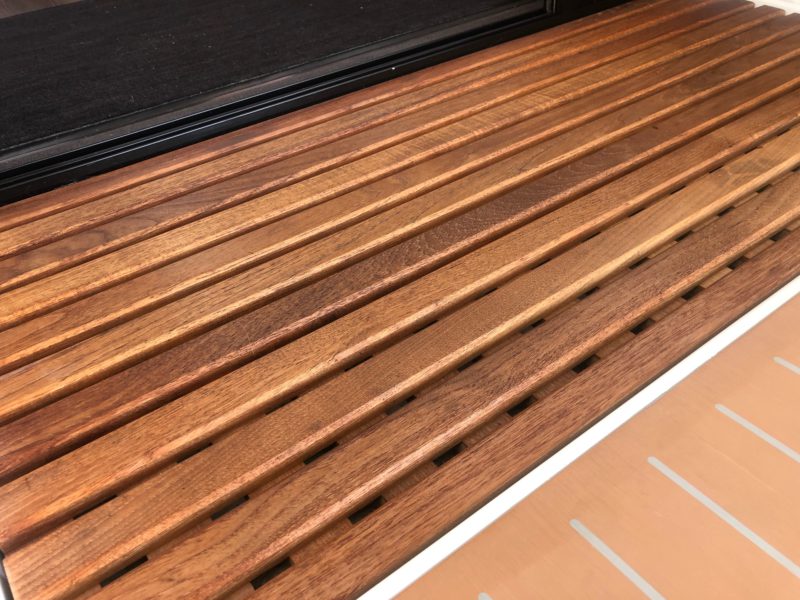
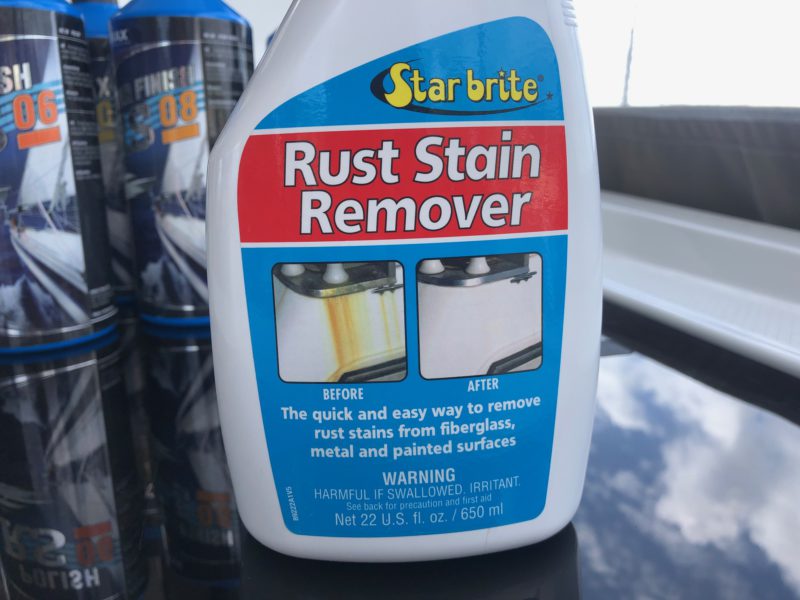
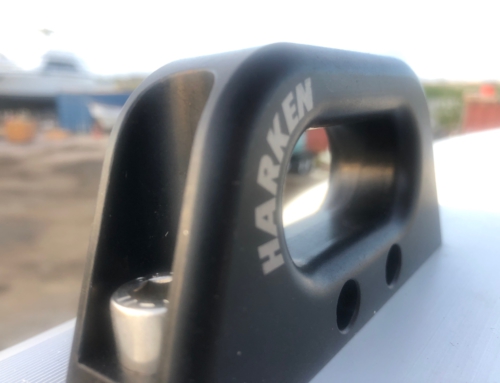

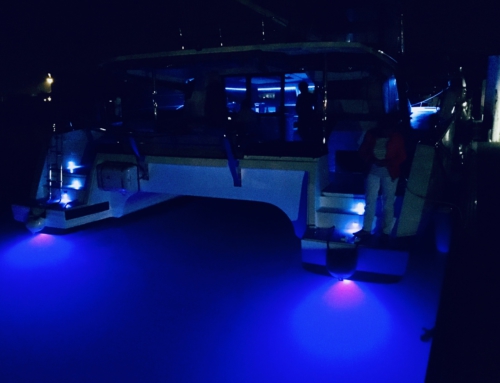
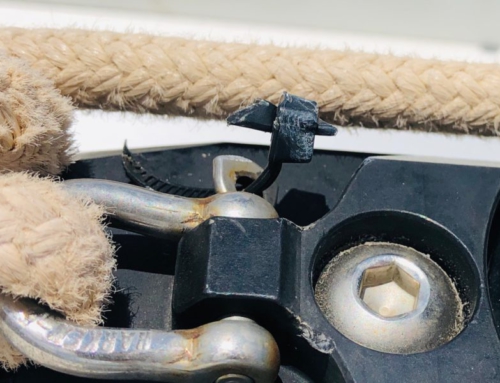
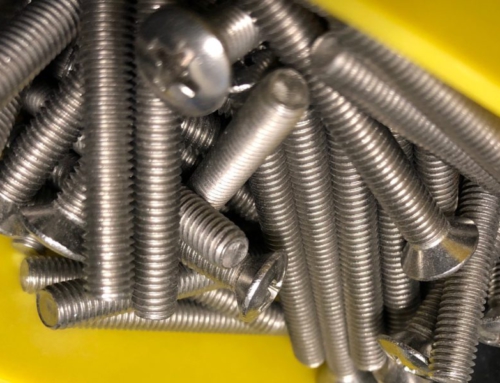
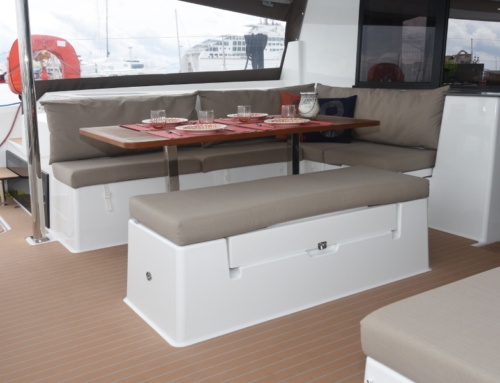
Using the best rubbing compound will restore severely stained and oxidized surfaces.